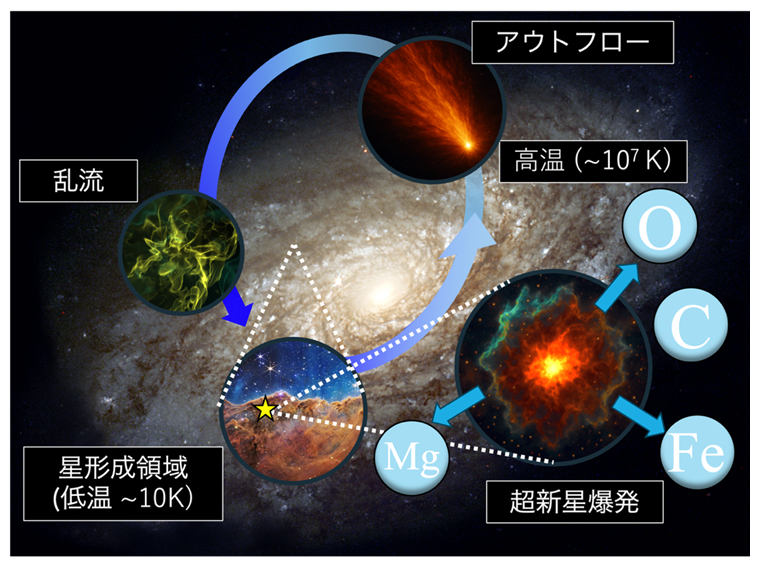2025-07-01 理化学研究所,東京大学,東北公益文科大学,神戸大学,マックス・プランク天体物理学研究所,フラットアイアン研究所計算天体物理学センター

図1 銀河内でのガスの循環
背景画像は© The Hubble Heritage Team(AURA/STScI/NASA)、星形成領域の画像は©NASA、ESA、CSA、and STScI
<関連情報>
- https://www.riken.jp/press/2025/20250701_2/index.html
- https://iopscience.iop.org/article/10.3847/1538-4357/add689
ASURA-FDPS-ML:サロゲートモデリングによる超新星フィードバックで加速される星ごとの銀河シミュレーション ASURA-FDPS-ML: Star-by-star Galaxy Simulations Accelerated by Surrogate Modeling for Supernova Feedback
Keiya Hirashima (平島敬也), Kana Moriwaki, Michiko S. Fujii, Yutaka Hirai, Takayuki R. Saitoh, Junichiro Makino, Ulrich P. Steinwandel, and Shirley Ho
The Astrophysical Journal Published: 2025 July 1
DOI:10.3847/1538-4357/add689
Abstract
We introduce new high-resolution galaxy simulations accelerated by a surrogate model that reduces the computation cost by approximately 75%. Massive stars with a zero-age main-sequence mass of more than about 10 M⊙ explode as core-collapse supernovae (CCSNe), which play a critical role in galaxy formation. The energy released by CCSNe is essential for regulating star formation and driving feedback processes in the interstellar medium (ISM). However, the short integration time steps required for SN feedback have presented significant bottlenecks in astrophysical simulations across various scales. Overcoming this challenge is crucial for enabling star-by-star galaxy simulations, which aim to capture the dynamics of individual stars and the inhomogeneous shell’s expansion within the turbulent ISM. To address this, our new framework combines direct numerical simulations and surrogate modeling, including machine learning and Gibbs sampling. The star formation history and the time evolution of outflow rates in the galaxy match those obtained from resolved direct numerical simulations. Our new approach achieves high-resolution fidelity while reducing computational costs, effectively bridging the physical scale gap and enabling multiscale simulations.



